Relation between Cardiac Injury and Elevated Levels of Inf lammatory Biomarkers in Patients with Severe COVID-19
Jing Li,MD,PhD ,Lijie Sun,MM ,Fang Wang,MD,PhD ,Bing Liu,MD,PhD ,Hui Li,MD ,Guodong Tang,MD ,Zhigang Chang,MD,PhD ,Aihua Liu,MD ,Chunyi Fu,MD ,You Lv,MD ,Jing Gao,MD,PhD and Jing Li,MD,PhD,FESC ,6
1 Division of Cardiology,Beijing Hospital,100730 Beijing,China
2 Division of Cardiology,Xuanwu Hospital Capital Medical University,100053 Beijing,China
3 Division of Intensive Care Unit,Beijing Hospital,100730 Beijing,China
4 Division of Rheumatology and Immunology,Beijing Hospital,100730 Beijing,China
5 Division of Emergency,Beijing Hospital,100730 Beijing,China
6 National Clinical Research Center of Geriatric Disease,Xuanwu Hospital,100053 Beijing,China
Abstract Background:Since early December 2019,coronavirus disease 2019 (COVID-19) has emerged as a global pandemic and public health crisis.This study aims to explore the relationship between cardiac injury and inf lammatory biomarkers in patients with severe COVID-19.Methods:We collected data on 91 patients with a conf irmed diagnosis of severe COVID-19 from February 8 to March 31,2020.Demographic characteristics,clinical data,and in-hospital outcomes were compared.The relationship between cardiac injury and inf lammatory biomarkers was analyzed.Logistic regression was used to explore the independent risk factors for cardiac injury.Results:The mean age of all patients was 61 years ± 14 years.About half of the patients were male.Hypertension and coronary heart disease were more common in the cardiac injury group.The levels of inf lammatory biomarkers in patients who experienced cardiac injury were generally higher than the levels of those without cardiac injury,including interleukin-6,interleukin-2 receptor (IL-2R),procalcitonin,and high-sensitivity C-reactive protein.There were positive correlations between the levels of high-sensitivity troponin I and N-terminal prohormone of brain natriuretic peptide and the levels of inf lammatory biomarkers.Logistic regression shows that IL-2R (odds ratio 1.001,95% conf idence interval 1.000- 1.002,P = 0.045) and comorbidities (odds ratio 4.909,95% conf idence interval 1.231- 19.579,P = 0.024)are independent risk factors for cardiac injury in patients with severe COVID-19.Conclusion:High levels of inf lammatory biomarkers are associated with higher risk of cardiac injury in patients with severe COVID-19.IL-2R and comorbidities are predictors of cardiac injury.
Keywords:Inf lammatory biomarker; cardiac injury; COVID-19; risk
Introduction
Coronavirus disease 2019 (COVID-19),caused by severe acute respiratory syndrome coronavirus 2 (SARS-CoV-2),has high invasiveness and has emerged as a global pandemic and public health crisis,and the numbers of infections and deaths are rising [1,2].Recent research found that cardiac injury is associated with a high risk of in-hospital death among patients with COVID-19 in Wuhan,China[3- 5].Some research shows that elevated levels of inf lammatory biomarkers are linked to the severity of COVID-19 [6- 8].However,there are limited data on the relationship between cardiac injury and inf lammatory biomarkers in patients with severe COVID-19.This study aims to examine the potential relationship between cardiac injury and inf lammatory biomarkers by retrospectively analyzing data from patients with severe COVID-19 in a hospital in Wuhan.
Methods
Study Participants
The single-center,retrospective,observational study was performed at Tongji Hospital,Wuhan,which was supported by the medical team of Beijing Hospital.We collected data from 100 patients from February 8 to March 31,2020.COVID-19 was diagnosed in the patients according to “ Diagnosis and Treatment of Corona virus Disease-19 (7th trial edition).” [9].All patients were classif ied as having severe COVID-19.Diagnosis of severe COVID-19 required at least one of the following criteria to be met:(1) dyspnea,respiratory frequency of 30 or greater minutes; (2)blood oxygen saturation of 93% or less at rest; (3)PaO2/FiO2 ratio of 300 or less.Diagnosis of critical COVID-19 required at least one of the following criteria to be met:(1) respiratory failure with mechanical ventilation; (2) septic shock; (3) transfer to the intensive care unit because of multipleorgan failure [9].Real-time reverse transcription PCR was used to conf irm SARS-CoV-2 infection in all patients.Nine patients were excluded because of the lack of cardiac biomarkers,including the values of high-sensitivity troponin I (hsTnI) and N-terminal prohormone of brain natriuretic peptide(NT-proBNP).All patients were discharged up to March 31,2020,except for the patients who died.
The 91 patients included in the analysis were divided into a cardiac injury group (n= 22) and a non-cardiac-injury group (n= 69) according to the serum levels of hsTnI and NT-proBNP.Cardiac injury was def ined as plasma hsTnI level greater than 34.2 pg/mL and/or NT-proBNP level greater than 450 pg/mL for patients younger than 50 years,greater than 900 pg/mL for patients aged between 50 and 75 years,and greater than 1800 pg/mL for patients older than 75 years [10].
Data Collection
We collected and analyzed the demographic characteristics (age and sex),clinical data (symptoms,comorbidities,vital signs on admission,laboratory examination results,treatment measures,time,and outcomes) from patients’ medical records.Laboratory examinations were conducted within 24 hours after admission,including a complete blood count,levels of inf lammatory biomarkers,coagulation prof ile,renal and liver function,hsTnI level,and NT-proBNP level.Time included hospitalization and time from onset to admission.The inf lammatory biomarkers included interleukin-6(IL-6),IL-1 β,IL-2 receptor (IL-2R),IL-8,IL-10,procalcitonin,ferritin,tumor necrosis factor,and high-sensitivity C-reactive protein (hsCRP).Measurements were repeated according to a change in illness while patients were in the hospital.The longest observed duration in survivors was 48 days.
Statistical Analysis
Continuous variables are expressed as the mean ± standard deviation or the median and the interquartile range,and categorical variables are expressed as the number and the percentage.The means of continuous variables were compared by use of the independent groupttest or the Mann-WhitneyUtest,as appropriate.The Pearson correlation coeff icient and Spearman rank correlation were used for linear correlation analysis.Proportions for categorical variables were compared by theχ² test or Fisher’ s exact test.Logistic regression analysis was used to further determine the predictors of cardiac injury.Statistical analyses were performed and f igures were constructed with use of IBM SPSS Statistics (version 25) for all analyses.A two-sided αof less than 0.05 was considered statistically signif icant.
Result
A total of 91 patients between February 8 and March 31,2020 were included in the analysis.Twenty-two patients (24.18%) had cardiac injury.The mean age of all patients was 61 years ± 14 years,ranging from 18 to 91 years.The most frequent initial symptom was fever (62 patients [68.1%]) ( Table1).In all patients,hypertension (37 patients [40.7%]) was the most frequent comorbidity.Patients with cardiac injury stayed longer in the hospital than those without cardiac injury.By April 10,2020,four patients (4.4%) had died,all in the non-cardiacinjury group.
Patients in the cardiac injury group had signif icantly higher levels of hsTnI and NT-proBNP,as expected ( Table2).The white blood cell count,neutrophil count,prothrombin time,thrombin time,D-dimer level,and creatinine level were higher in the patients with cardiac injury than in the patients without cardiac injury ( Table2).
Table3 shows that the peak values of inf lammatory biomarkers in the cardiac injury group were generally higher than those in the group without cardiac injury.Although the IL-8 level was higher in patients without cardiac injury,the levels in both groups were within the normal range( < 62 pg/mL).Figures 1 and 2 shows that there are positive correlations between the levels of hsTnI and NT-proBNP and the levels of inf lammatory biomarkers.
Logistic regression analysis was used to assess the effect of age,male sex,comorbidities,IL-2R,and creatinine on cardiac injury in patients with severe COVID-19.Comorbidities included hypertension,coronary heart disease,and diabetes.In univariablelogistic regression analysis,male sex,comorbidities,IL-2R and creatinine were risk factors for cardiac injury ( Table4).Multivariableregression analysis showed IL-2R (odds ratio 1.001,95% conf idence interval 1.000- 1.002,P = 0.023) and comorbidities (odds ratio 4.909,95% conf idence 1.231- 19.579,P = 0.024) are independent risk factors for cardiac injury in patients with severe COVID-19 ( Table4).
Discussion
This retrospective cohort study elicited three main f indings.First,the occurrence of cardiac injury is not uncommon,and the incidence reaches 24.18%in patients with severe COVID-19.Second,elevated levels of inf lammatory biomarkers and cardiovascular disease are more prevalent in the cardiac injury group.Finally,IL-2R and preexisting cardiovascular disease are independent risk factors for cardiac injury in patients with severe COVID-19.
Several retrospective studies exploring the relationship between cardiac injury and mortality in COVID-19 patients have been published.Shi et al.[3] and Guo et al.[11] both reported COVID-19 patients with cardiac injury have higher levels of C-reactive protein and procalcitonin.Consistently,our study also found that patients with severe COVID-19 with cardiac injury have evidence of severer systemic inf lammation,including higher levels of IL-6,IL-2R,hsCRP,and procalcitonin.Our study participants were mainly patients with severe COVID-19.Moreover,our research provides information not reported by previous research,and f irst demonstrates that IL-2R and underlying cardiovascular disease are independently associated with increased risk of cardiac injury in patients with severe COVID-19.
Huang et al.[6] found that COVID-19 patients admitted to the intensive care unit (ICU) had higher plasma levels of cytokines,including IL-2,IL-7,IL-10,and tumor necrosis factor than those non-ICU patients.This indicates that critical COVID-19 patients may experience the cytokine storm,an uncontrolled and dysfunctional immune response [12,13].In the present study,the levels of inf lammatory biomarkers had positive correlations with the levels of hsCRP and NT-proBNP in patients with severe COVID-19,suggesting that a cytokine storm may contribute to myocardial injury and left ventricular impairment.Patients with cardiac injury had higher levels of inf lammatory biomarkers,including white blood cell count,neutrophil count,hsCRP level,and procalcitonin level.So we speculate that inf lammation plays an important role in cardiac injury.Inf lammation may cause endothelial cell dysfunction and increase the procoagulant activity of blood,which can lead to the rupture of coronary plaque [14- 17].
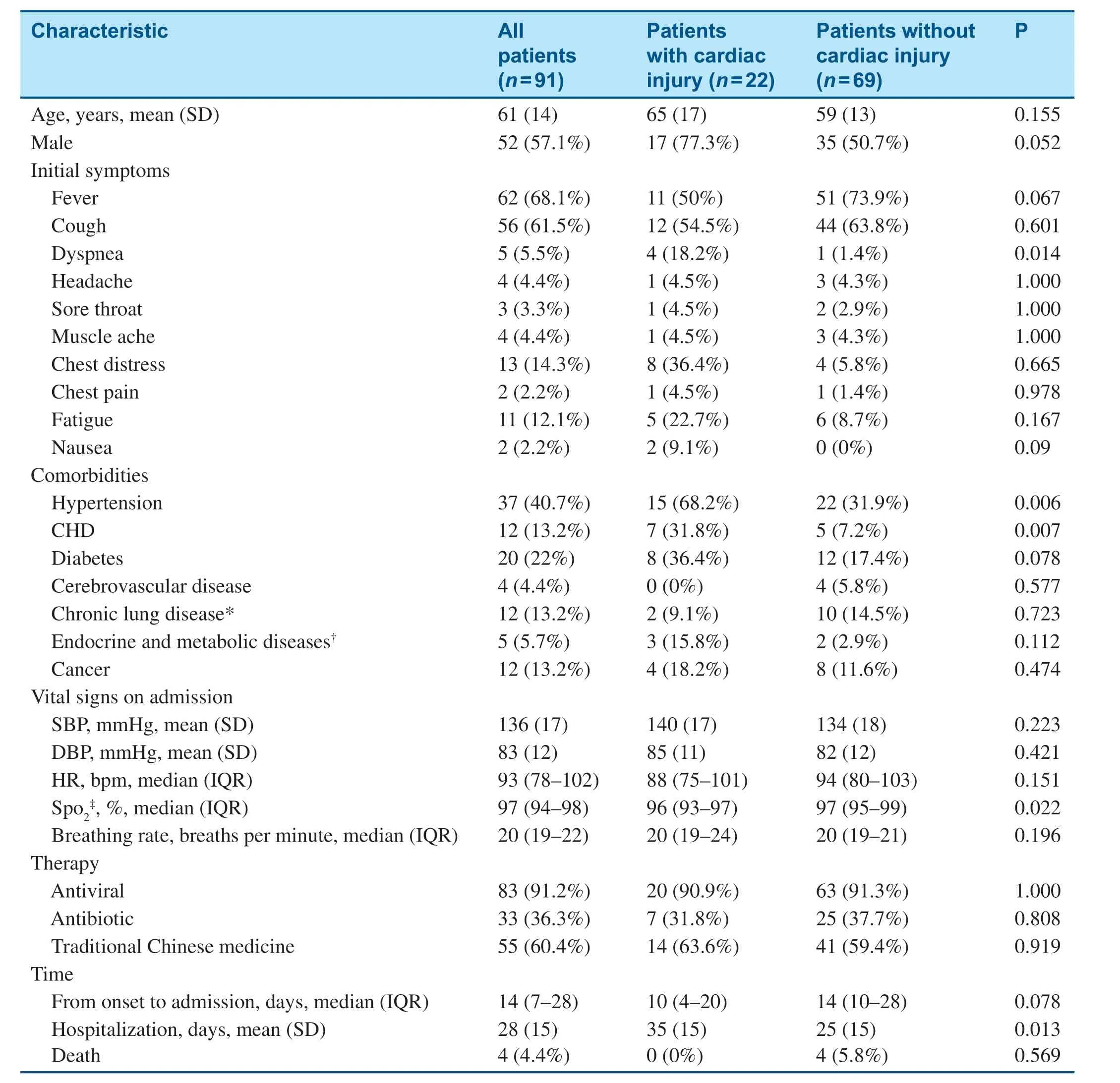
Table1 Demographic and Clinical Characteristics of Patients with Coronavirus Disease 2019 (COVID-19).
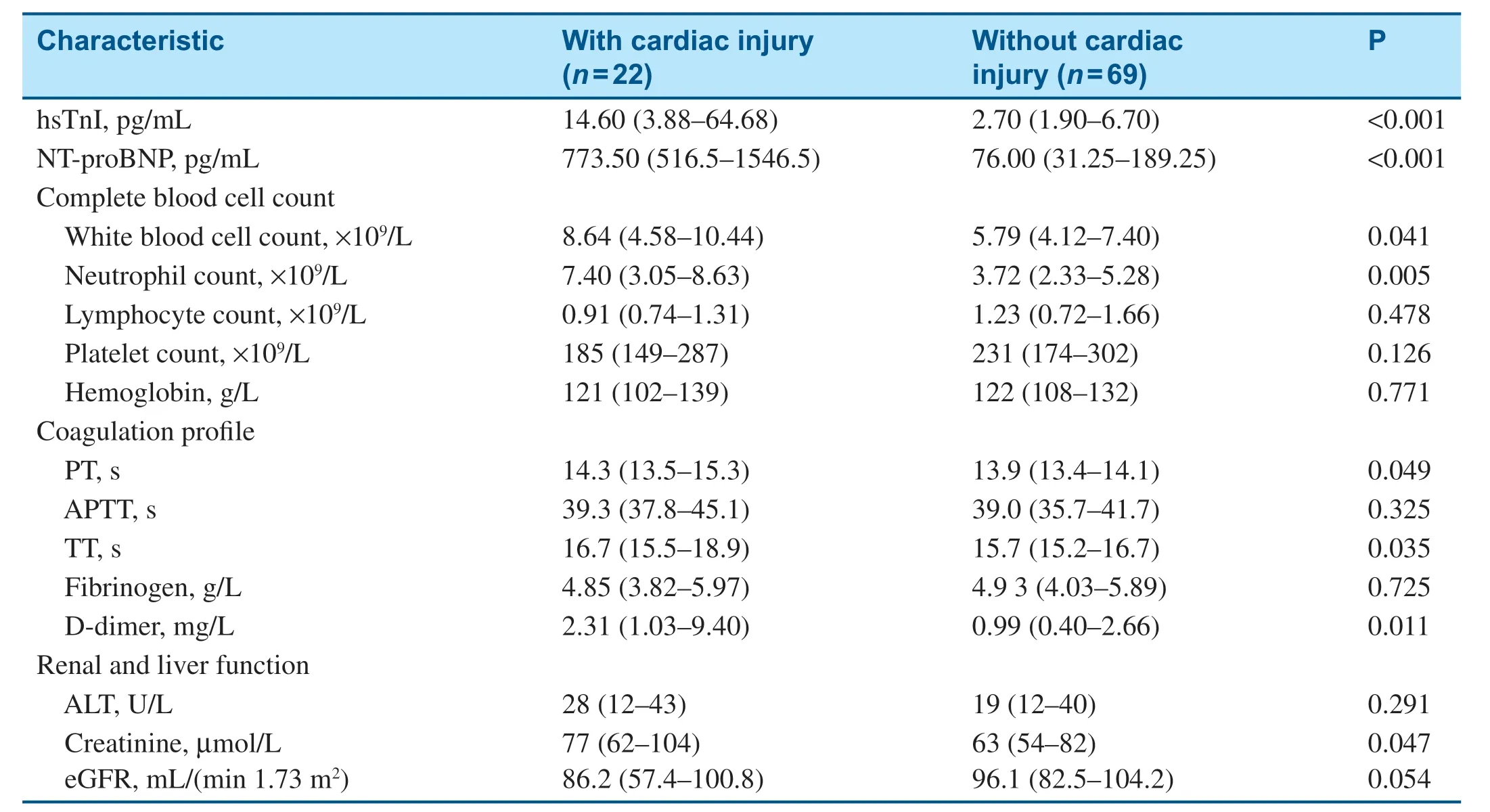
Table2 Laboratory Findings for Different Groups of Patients.

Table3 Peak Levels of Inf lammatory Biomarkers for Different Groups of Patients in the Hospital.
Among all the cytokines studied,the effect of IL-2R on cardiac injury is particularly prominent.IL-2,a T-cell growth factor,and IL-2R have been found in plaque [18,19].Previous research found that IL-2R regulates lymphocyte activation,plays an important role in atherosclerosis,and positively relates to the occurrence of cardiovascular disease[20- 22].IL-2 promotes regulatory T cells and may have an atheroprotective role [23].So we presume that because of SARS-CoV-2 invasion and lymphopenia [24],the interaction of excessively secreted IL-2 and IL-2R promotes the development of atherosclerosis and advanced cardiac injury.
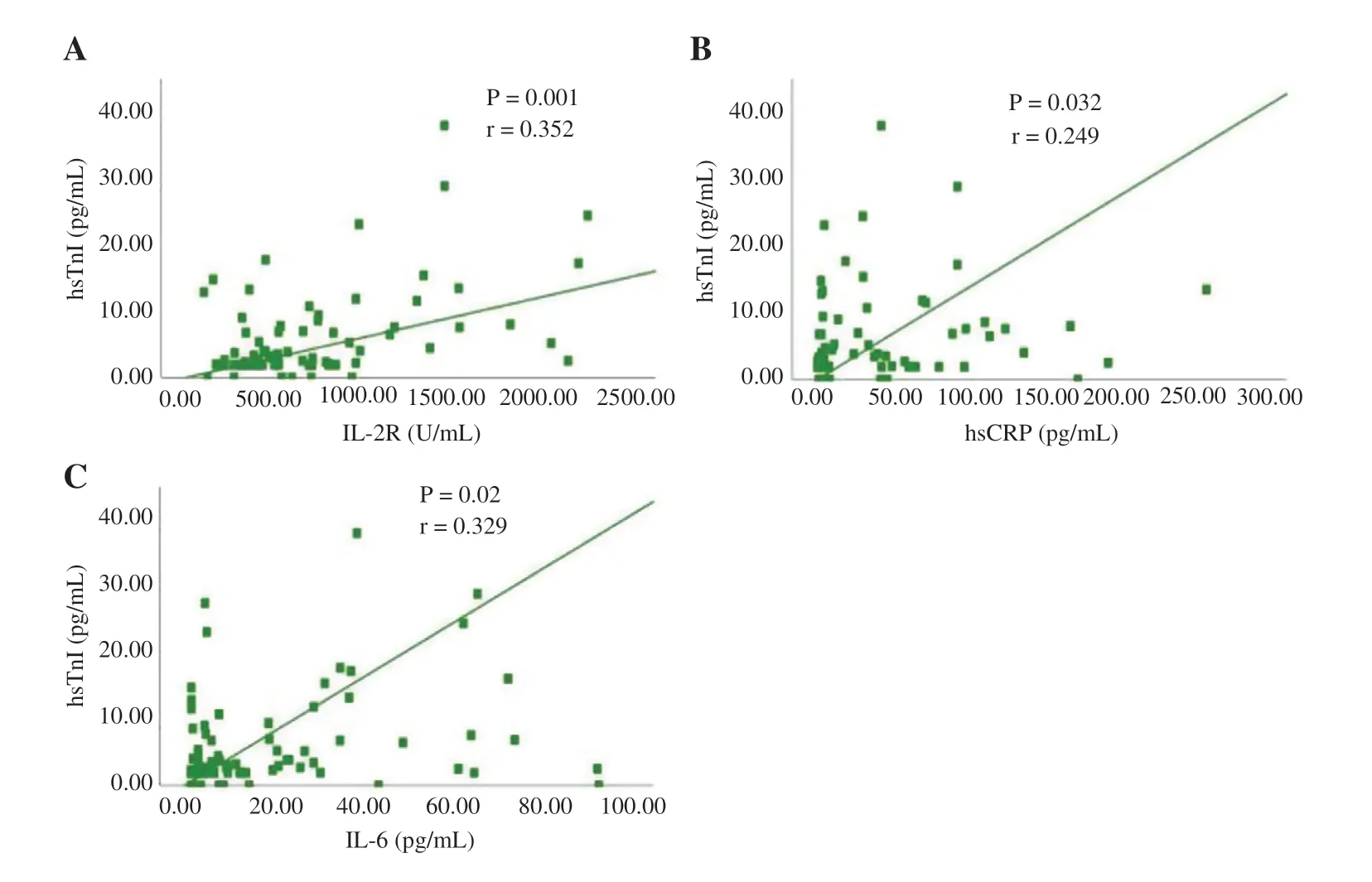
Figure1 Correlation between the Levels of High-Sensitivity Troponin I (hsTnI) and Inf lammatory Biomarkers.
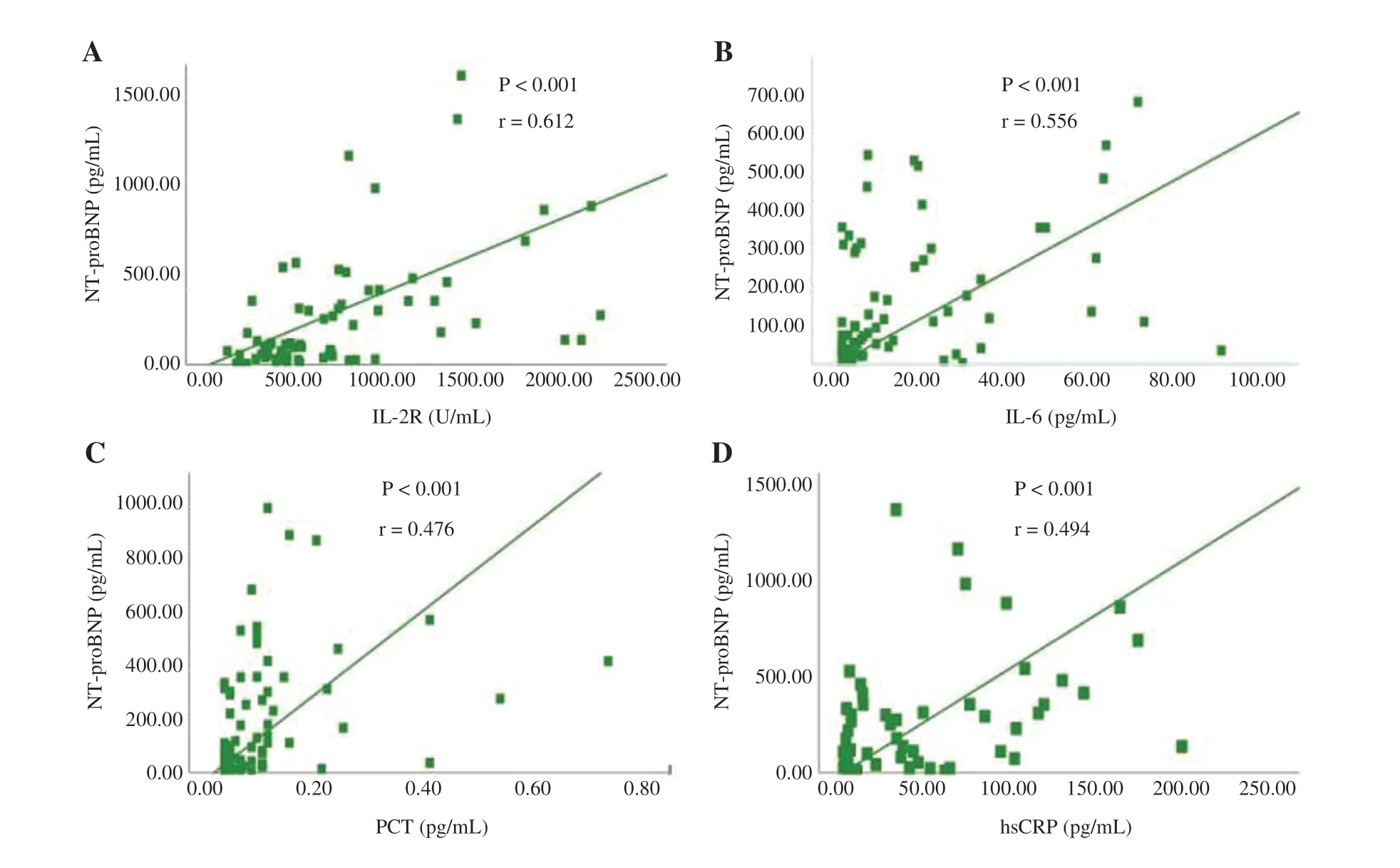
Figure2 Correlation between the Levels of N-terminal Prohormone of Brain Natriuretic Peptide (NT-proBNP) and Inf lammatory Biomarkers.

Table4 Univariate and Multivariate Logistic Regression Analysis of Risk Factors for Cardiac Injury.
By April 10,2020,95.6% of patients in our study had been discharged from hospital,and mortality was 4%.Although we did not f ind statistical differences in mortality regarding patients with severe COVID-19 with or without cardiac injury on admission,patients with cardiac injury stayed longer in the hospital than patients without cardiac injury.Long-term observation is needed to conf irm the impact of elevated levels of inf lammation biomarkers on the prognosis of patients with severe COVID-19 with cardiac injury.
Limitations
Our research has several limitations.Firstly,it was a small sample,single-center,and retrospective study,and selection bias may not be avoided in this study.At the same time,a small sample size might lead to overf itting.Secondly,some results of cardiac examinations,such as electrocardiogram and cardiac ultrasonography,are incomplete in our study,resulting in our being unableto comprehensively describe the cardiac function.Thirdly,because of quick outbreaks and urgent treatment needs,changes in the levels of inf lammatory biomarkers were not detected regularly.Data from larger populations and multiple centers are warranted to conf irm the dynamic change of the levels of inf lammatory biomarkers.
Conclusion
In conclusion,inf lammatory biomarkers play an important role in cardiac injury in patients with severe COVID-19.Further studies with a large sample size are needed to verify our f indings.
Funding
The study was funded by the Beijing Municipal Natural Science Foundation (no.7192078).
Ethics approval
This study was conducted in accordance with the Declaration of Helsinki and was approved by the Ethics Commission of Beijing Hospital(2020BJYYEC-035-01).The requirement for written informed consent was waived because of the context of an emerging infectious disease.
Conf ilcts of Interest
The authors declare that they have no conf licts of interest.
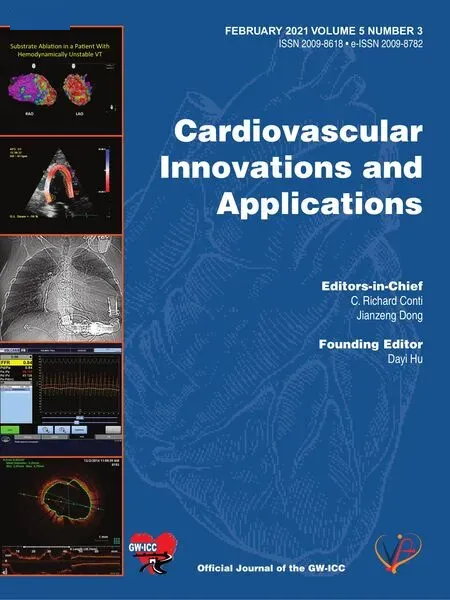 Cardiovascular Innovations and Applications2021年1期
Cardiovascular Innovations and Applications2021年1期
- Cardiovascular Innovations and Applications的其它文章
- Coronavirus 19 (some thoughts about the Disease)
- The Challenges of Treating Acute Myocardial Infarction due to Variant Angina:Lesson from an Interesting Case
- Implantation of an S-ICD in a Patient with a DDD Pacemaker and Congenitally Corrected Transposition of the Great Arteries
- Predictive Value of Blood Pressure,Heart Rate,and Blood Pressure/Heart Rate Ratio in a Chinese Subpopulation with Vasovagal Syncope
- ECMO/CRRT Combined Support in the Treatment of Critically Ill SARS-CoV-2 Pneumonia Patients
- Risk of Target Organ Damage in Patients with Masked Hypertension versus Sustained Hypertension:A Meta-analysis
